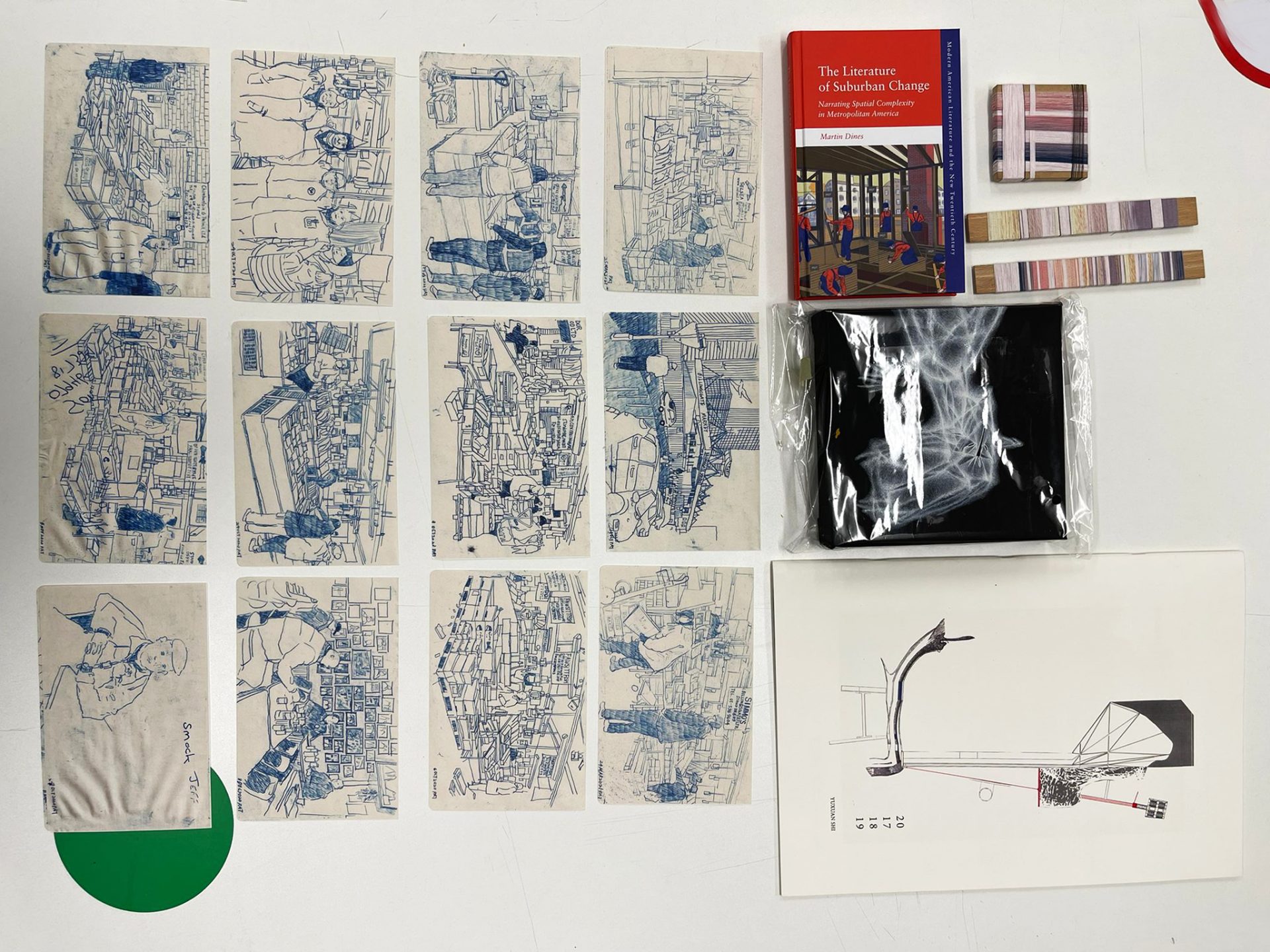Stanley Picker Gallery is pleased to be hosting Visibility of the Invisible, a Lobby display, online talk and lecture series, responding to The Decorators Portal Tables, in collaboration with MA Curating Contemporary Design students at Kingston School of Art. Below the students discuss their inspiration and project themes.
How do you map the world?
Every map represents an abstracted world to enable understanding, which impacts on how we see the world. In attempts to challenge those narratives, every map can be countered and critiqued through the creation of other maps. This exhibition aims to visualise and critically reflect on world-building through maps and counter-maps showcasing possible and suggested invisible worlds.
This exhibition is the result of a call to all disciplines at Kingston School of Art (and beyond) to share forms of ‘mapping a world’ in their own discipline. Through careful interpretation we intend to make visitors aware of the techniques used for mapping, the strengths of representing complex environments and of making invisible relationships visible, but also the limitations and potential for misrepresentation that maps offer.
Theme 1: Interference
When creating a map the complex physical world is reduced to an abstract two dimensional surface. Such a horizontal portrayal can lose its tangible connection to the world it represents. Mapping through touchable objects that are moving in and reflecting on their environment challenges the way we see our surroundings by making the relationship between the world and its representation a more dynamic interaction. The artworks in this first section play with space by questioning and intervening in the space.
Theme 2: Delineation
Throughout Western history the map has taken shape as a two-dimensional visualisation from a bird’s-eye view, even though humans rarely see the world from that perspective. Why should this be the only way to map the world? What would the map look like from the ground up? The paintings in this section explore alternative ways of visualising a map from a range of perspectives such as mapping through wildlife to visualise the territorial characteristics or by visualising the evolving influence of rhizomes on forest forms.
Theme 3: Amplification
The diversity of our world has neither been visualised in the content nor the format of maps. Western views still dominate and influence how information is abstracted within maps, and which narratives are told while others are altered or even lost. As maps are never neutral, it is time to share stories which have so far been ignored and missed in representations of worlds. The presented artworks showcase voices that have not been heard and questions how we move in our surroundings.
Theme 4: Observation
Have you ever looked at your surroundings with attention and care? At all the details – at the features of buildings, at the elements that define streets, at specific aspects of nature or even at the places in-between? Are we attentive and observant to notice and understand what we see? Are we aware how much we miss and how little we see? By focussing on the details, the movements and the changes within our environment, the artworks in this section will reveal our worlds in all their wealth and diversity of detail.
Exhibiting Artists: Yingli Xu, Gabrielle Zemsky, Aoife Donnelly, Albert Kueh, Alexandra Warren, Tanvi Ranjan, Martin Dines, Daniela Lingner, Finlay Batey, Noor Moustafa, Isabella Osbourne, Tom Aberneithie, Lei Yu, Zixiong Zhou, Faheim Abdullah, Moon II Sunn, Pat Wingshan Wong, Michael Salu, Dijun Shine, Muskan Rochlani, and Yuxuan Shi. Please follow this link to read Artist Bios.
Online Talk & Lecture: We will introduce the audience to the work of Native Land, Studio L, Aspen Pflughoeft, Public Lab, Sanchayan Ghosh, Visual Artist and Pedagogue; Noriko Deno, Community Designer; Vera Sacchetti, Design Critic and Curator; Benjamin Hennig, Founding Director and Geographer or Worldmapper; Christine Luckasavitch (McRae), Exectutive Director, Native Land Digital; Kollecktiv Orangotango, Hagit Keysar, Researcher and Activist; and Simon Weckert, Artist. The discussions will allow us to debate the political, cultural and economic power of maps and the need for counter-mapping for world-building and understanding. Please come by at the gallery for the live streaming or join us online. Follow this link for the full schedule and biographies.
MA Curating Contemporary Design is collaborative degree, between Kingston School of Art and the Design Museum, has grown into one of the world’s foremost programmes for design curators. Taught by leading curators and designers, the course engages critically and creatively with our fast-changing, complex world. You will have the opportunity to curate live projects and build your own professional profile, through the Design Museum and with institutions such as the Architectural Association, British Council, Gallery Fumi and the Royal Academy of Arts. Led by both research and practice, this course has taught aspiring curators for more than fifteen years.
Share your thoughts on social media by tagging us on Instagram @stanleypicker or Twitter @pickergallery or by sending emails to stanleypickergallery@kingston.ac.uk
